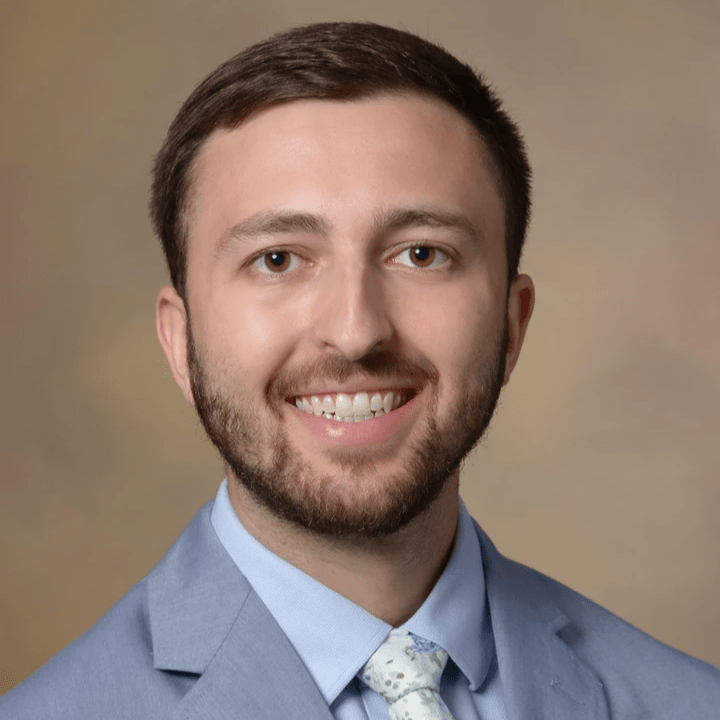

Elise N Erickson
PhD CNM FACNM
Assistant Professor
The University of Arizona
Research Team
Members, collaborators and friends of MuMH labThe University of Arizona

Elise Erickson
Principal Investigator
Assistant Professor
Certified Nurse-Midwife
Dr. Erickson earned a BSN from the University of Michigan in 2003 and a Masters for Midwifery and Women's Health from the University of Illinois Chicago in 2005. After practicing for several years she returned to UIC for graduate study in Behavioral Neuroscience and ultimately completed a PhD at Oregon Health and Science University in 2018. Dr. E joined the University of Arizona in Tucson in 2022. She has practiced as a CNM for over 18 years, catching upwards of 1000 babies, having lost count awhile ago. Her work has been supported through various awards including the NICHD K12 BIRCWH, a K99/R00 via NINR, institutional and foundation funding mechansims. She is currently open to mentoring graduate students from Nursing, Pharmacy or the Clinical Translational Sciences Graduate Program.

Hillary Ruvalcaba
Clinical Research Coordinator
PARTO study
Hillary earned a BS in Molecular and Cellular Biology (Genetics & Human Health Emphasis) from the University of Arizona (UA) in 2022 and is currently pursuing a BA in Spanish at UA. Her research interests include preconception, prenatal, and pediatric genetics. This interest is rooted in her firm belief that risk assessment and early intervention are vital for prevention, adaptation, and treatment of genetic conditions. In her free time, Hillary enjoys traveling, making art, yoga, and spending time with her husband and English Bull Terrier.

Lily Woods
Clinical Research Coordinator
MuMH Lab, LIcensed Counselor
Lily earned a bachelor's in psychology (2020) and master's in counseling (2023) with an emphasis in clinical mental health and rehabilitation from the University of Arizona. She is interested in using a social determinants of health framework to investigate reproductive psychophysiology. Outside of the lab, she provides psychotherapeutic treatment for a constellation of reproductive mental health conditions. As a licensed counselor, she translates reproductive justice into therapeutic practice—emphasizing empowerment and social transformation. She values the ways in which research and clinical practice inform one another and hopes to use this knowledge to identify and mitigate gaps in whole health care.

Erin George
PhD, CNM
Postdoctoral Researcher
Dr.George earned a BA from Bryn Mawr College in 2006, a BSN from MGH Institute of Health Professions in 2012 and an MSN in Nurse-Midwifery from Yale University in 2012. Dr. George practiced full-scope midwifery for over 10 years in academic medical center, community hospital, and freestanding birth center settings. She completed a PhD in Nursing at Boston College in 2023. Dr. George’s work has been supported through various organizations, including the American College of Nurse-Midwives, the Association of Women’s Health, Obstetric, and Neonatal Nurses, and Nurses Educational Funds.

Desiree Riley
Research Assistant: PARTO
Undergraduate student
Desiree is a third year student at the University of Arizona majoring in biomedical engineering with a minor in biochemistry. After graduation, she plans to attend medical school and continue doing research. She is interested in clinical research that incorporates physiological concepts with social determinants of health. In her free time, she enjoys traveling, sewing, and playing sports.

Jade Radoian
Research Assistant: PARTO
Jade is a fourth-year Physiology and Medical Sciences student at UA. She is also completing minors in Spanish and Biochemistry. Upon completion of her bachelor's degree, she is determined to apply to a PA program, earn her master's, and work towards her goal of becoming a Physician Assistant. Jade has a strong passion for maternal-fetal medicine and is confident she will continue working in this field for the duration of her career. Apart from being a proud health sciences student and PARTO team member, Jade enjoys spending time with family and friends, cooking, traveling, creating art, and taking care of her many plants. She is eager to share her interest in reproductive health with collaborators and the Tucson community.

Natalia Leakos
Research Assistant: PARTO
MEPN Student
Natalia earned a BS in general biology from the University of California, Los Angeles. While gaining experience in the education field and in the hospital’s labor and delivery unit, she developed a passion for teaching, research, and caring for patients. She decided to go back to school and is currently pursuing her master’s degree in nursing (MS-MEPN) at the University of Arizona, with future goals of providing for women and children as either a nurse-midwife or nurse practitioner.

Amanda Huff
Research Assistant: PARTO
Medical Student COM-T
Amanda is a 3rd year medical student at the University of Arizona College of Medicine- Tucson. She completed her undergraduate degree in public health and enjoys research that promotes women's health. She is planning on completing a residency in obstetrics and gynecology after graduating from medical school. Other than studying she also likes to spend time hiking, playing tennis and pickle ball, and spending time with friends.

Sarah Weinstein
PhD Student/ Certified Nurse-Midwife
International Board Certified Lactation Consultant
PhD Candidate
Sarah earned her bachelor's in integrative biology from Berkeley where she first learned about midwifery care in her reproductive biology course. She earned her BSN and graduated with her master's in nurse-midwifery from Oregon Health and Sciences University in 2014. She started her career in the Four Corners region, and since then, she has caught babies in and out of the hospital and in rural and urban settings. Sarah expanded her full-scope midwifery to include breastfeeding and lactation medicine. She is active in midwifery as advocacy in AZ, and is currently a member of the OBGYN faculty practice at Banner University Medicine in Tucson. She is pursuing her PhD under the guidance of Drs. Elise N. Erickson and Aleeca F. Bell.

Nick Lolli
MD, OB/GYN Resident Physician
PARTO Study Support
Nick is an ObGyn resident at the University of Arizona. Originally from Maryland, he earned his bachelor's degree in biology from the University of Maryland and completed his medical degree at the University of Virginia. After completing residency, he plans to practice as a generalist with special interests in peripartum care, LGBTQ+ health, and family planning. When not at work, he enjoys taking care of his cats and watching the newest movies.
Current Projects
See what's keeping us so busy!

PARTO Study
Predicting Adequate Response to Oxytocin
While a lot of factors have been associated with a person having postpartum hemorrhage (PPH), our clinical tools for predicting PPH currently miss 1 in every 2-3 cases of hemorrhage. That is, the birth was consider low-risk for hemorrhage but it happened anyway. Our PARTO project aims to study biomarkers linked to oxytocin function in the body for predicting PPH. Click here for a recent blog about the science behind this study. Click here to see the participant video for our currently enrolling study at Banner University Medical Center in Tucson. AZ in English or en Español. Please use this form to self-refer if interested in joining the study! Visit our website here.

The Clock is Ticking
Biological Age in the Era of Advanced Maternal Age
The term "Advanced Maternal Age" usually is applied to anyone giving birth who is 35 years or older. A growing number of births are occurring later in life as people pursue educational or economic milestones prior to having children. However, most pregnancies after 35 don't have complications and many people under 35 have age-related problems like diabetes, hypertension or other factors that influence their health in pregnancy. This study is using biomarkers from DNA, called "epigenetic clocks" to examine biological age and learn if advanced biological age is linked to social stress during pregnancy and birth related complications.

BioBAYB
Biological Rhythms Before & After Your Birth
In this study, we examine how physiological data gathered from wearable devices worn during pregnancy could be useful in tracking pregnancy health and outcomes. Using machine learning and artificial intelligence can be useful in analyzing the complex signals of life during gestation.
See publication / blog here.

Midwives as Mechanisms
Certified Nurse-Midwives and other midwifery professionals hold the perspective that labor and birth and normal parts of reproductive physiology. Data on midwifery-led care can help us understand how the processes of care, which emphasize watchful waiting in the absence of pathology in pregnancy, can help achieve healthy birth outcomes like a lower Cesarean birth rate for appropriate clients. Midwives work in conjunction with health systems and obstetricians and may attend births in hospital, birth centers or at home. See our publications for past studies on midwifery care. outcomes.
Biomarkers / Conceptual Model:
Genetic and Epigenetic Biomarkers in the development of postpartum hemorrhage and oxytocin treatment response.In this figure we show the hypotheses underlying oxytocin function variation from person to person. However, if we knew in advance why some may respond better than others... how could we change our practice? Here is a link to a recent BLOG on this topic in Communications Medicine/ Nature Community.

PARTO study
Predicting Adequate Response to Oxytocin
If you would like more information, please click here to be directed to a secure screening form.
We'll be in touch with you very soon!
Publications







Link to: NCBI Linked Publication List
2024
Erickson, E.N., Hersh, S.R., Wharton, M.R., Bovbjerg, M.L. and Tilden, E.L. (2024), The Role of Passive Descent and Epidural Analgesia in Outcomes Associated With Prolonged Pushing Among Nulliparous Individuals in Midwifery Care. J Midwifery Womens Health. LINK
Erickson EN, Carlson NS, (2024). Role of Physiologic and Pharmacologic Oxytocin in Labor Progress. The Labor Progress Handbook: Early Interventions to Prevent and TreatDystocia, 5th Edition, p.82-100,Hoboken, NJ: John Wiley & Sons Ltd. LINK
2023
Weinstein SR, Erickson EN, Molina R, Bell AF. Maternal outcomesrelated to Genetic and epigenetic Variation in the oxytocin system: A scoping review. Comprehensive Psychoneuroendocrinology. 2023;16. LINK
Erickson EN, Gotlieb N, Pereira LM, Myatt L, Mosquera-Lopez C, Jacobs PG. Predicting labor onset relativeto the estimated date of delivery using smart ring physiological data. npj Digit Med. 2023;6(1):1-13. LINK
Erickson EN (2023). A prolonged latent phase: an early career in oxytocin during birth. Comprehensive Psychoneuroendocrinology. 2023;15 LINK
Carlson NS, Carlson MS, Erickson EN,Higgins M, Britt AJ, Amore AD. Disparities by race/ethnicity in unplanned cesarean birth among healthy nulliparas: a secondary analysis of the nuMoM2b dataset. BMC Pregnancy and Childbirth. 2023;23(1):342. LINK
Erickson EN, Myatt L, DanoffJS, Krol KM, Connelly JJ. Oxytocin receptor DNA methylation is associated with exogenous oxytocin needs during parturition and postpartum hemorrhage. Communications Medicine. 2023;3(1):1-13. LINK
2022
Erickson EN, Krol KM,Perkeybile AM, Connelly JJ, Myatt L. Oxytocin receptor single nucleotide polymorphism predicts atony-related postpartum hemorrhage. BMC Pregnancy and Childbirth. 2022;22(1):884. LINK
Erickson EN, Knight AK, SmithAK, Myatt L. Advancing understanding of maternal age: correlating epigenetic clocks in blood and myometrium. Epigenetics Communications. 2022;2(1):3. LINK
Grant AD, Erickson EN. Birth, love,and fear: Physiological networks from pregnancy to parenthood. Comprehensive Psychoneuroendocrinology. 2022; 11:100138. LINK
Erickson E, Tabari K, BovbjergM, Cheyney M. Patterns in second stage labor care practices associated with genital tract injury and postpartum hemorrhage during physiologic birth: a latent mixture model analysis. International Journal of Childbirth. 2022;12(4):224-238. LINK
Erickson EN, Carlson NS. Maternal Morbidity Predicted by an Intersectional Social Determinants of Health Phenotype: A Secondary Analysis of the NuMoM2b Dataset. Reprod Sci.2022;29(7):2013-2029. LINK
Kissler K,Breman RB, Carlson N, Tilden E, Erickson E, Phillippi J. Innovations in Prospective Perinatal Research as a Result of the COVID-19 Pandemic. Journal of Midwifery & Women’s Health.2022;67(2):264-269. LINK
2021
Erickson EN, Bailey JM, Colo SD, Carlson NS, Tilden EL. Induction of labor or expectant management? Birth outcomes for nulliparous individuals choosing midwifery care. Birth. 2021;48(4):501-513. LINK
2020
Erickson EN, Carlson NS. Predicting Postpartum Hemorrhage After Low-Risk Vaginal Birth by Labor Characteristics and Oxytocin Administration. Journal of Obstetric,Gynecologic & Neonatal Nursing. 2020;49(6):549-563. LINK
Erickson EN, Bovbjerg ML, Cheyney MJ. Factors affecting third‐stage management and postpartum hemorrhage in planned midwife‐led home and birth center births in the United States. Birth.2020;47(4):397-408. LINK
Denfeld Q, Erickson E, Valent A, et al. COVID-19: Challenges and Lessons Learned from Early Career Investigators. Journal of Women’s Health.2020;29(6):752-754. LINK
Erickson EN, Lee CS, Carlson NS. Predicting Postpartum Hemorrhage After Vaginal Birth by Labor Phenotype. Journal of Midwifery Womens Health. 2020;65(5):609-620. LINK
Erickson EN, Carter CS, Emeis CL. Oxytocin, Vasopressin and Prolactin in New Breastfeeding Mothers: Relationship to Clinical Characteristics and Infant Weight Loss. Journal of Human Lactation.2020;36(1):136-145. LINK
2019
Erickson EN, Lee CS, Grose E, Emeis C. Physiologic childbirth and active management of the third stage of labor: A latent class model of risk for postpartum hemorrhage. Birth. 2019;46(1):69-79. LINK
Thiele DK, Erickson EN, Snowden JM. High Prevalence of Maternal Serum25-Hydroxyvitamin D Deficiency Is Not Associated with Poor Birth Outcomes Among Healthy White Women in the Pacific Northwest. Journal of Obstetric,Gynecologic & Neonatal Nursing. 2019;48(2):163-175. LINK
2017
Erickson EN, Emeis CL. Breastfeeding Outcomes AfterOxytocin Use During Childbirth: An Integrative Review. Journal of Midwifery & Women’s Health. 2017;62(4):397-417. LINK
Erickson EN, Lee CS, Emeis CL. Role of prophylacticoxytocin in the third stage of labor: physiologic versus pharmacologically influenced labor and birth. Journal of Midwifery and Women’s Health.2017;62(4):418-424. LINK
2014
Bell AF, Erickson EN, Carter CS. Beyond labor: The role of natural andsynthetic oxytocin in the transition to motherhood. Journal of Midwifery and Women’s Health. 2014;59(1):35-42. LINK
MuMHy Blog
Thoughts on the science of birth, maternal health and sciencing life.
Pregnant individuals are often asked about their due date. However, few births will spontaneously occur on this date. Using machine learning and physiological data from a wearable device, our study aims to forecast longer vs. shorter pregnancies relative to the clinical due date. Published...While interest in the epigenetic regulation of oxytocin function is growing in many fields of science; little is known about how pharmacologic oxytocin administration, a common medical intervention during childbirth, may be influenced by a person's epigenetic pattern. Published Jan 27, 2023 ...
©2023























